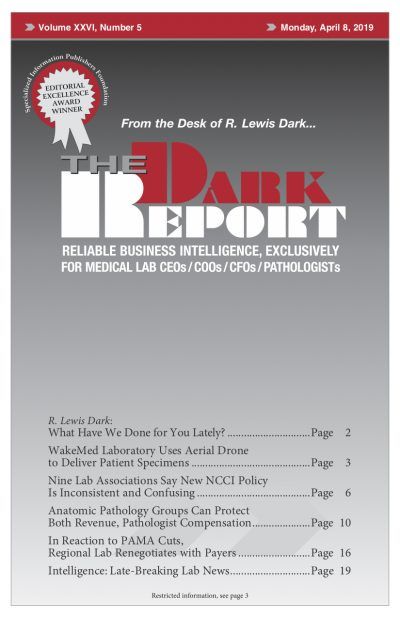CEO SUMMARY: For two years, clinical lab professionals at WakeMed Health and Hospitals have tested the use of aerial drones to transport patient specimens from a physicians’ office satellite lab/draw station to the WakeMed Medical Center’s central lab. Late last month, they completed the first successful revenue-generating commercial transport of lab supplies by drone in …
WakeMed Uses Drone to Deliver Patient Specimens Read More »
To access this post, you must purchase The Dark Report.


